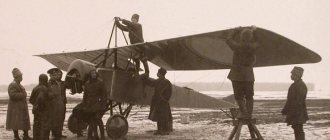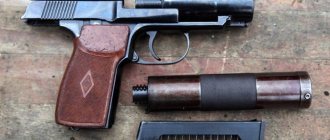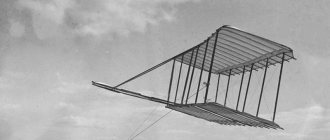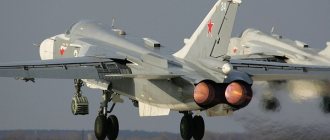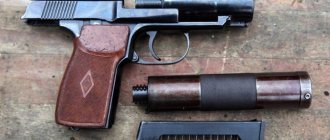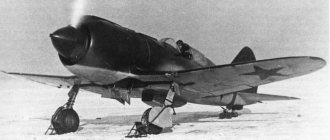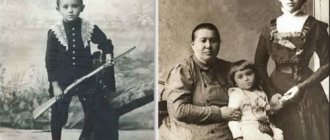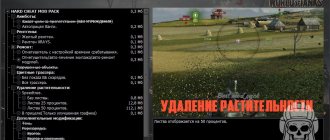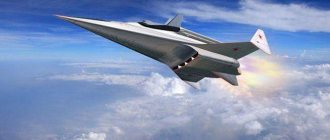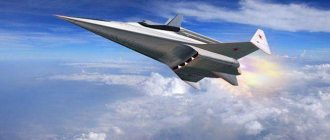For many, the name Nikolai Polikarpov is most often associated with fighter aircraft of the 30s of the last century. The legendary night bomber U-2 (Po-2) has also not been forgotten. The early aircraft of the outstanding designer remained in the shadows, including the multi-role aircraft R-5.
At one time, the R-5 aircraft was one of the main ones in the Red Army Air Force, where it performed various functions. Also, civil aviation received approximately a thousand of these copies. Polikarpov's reconnaissance aircraft was respected for its simplicity and unpretentiousness in operation.
The Soviet reconnaissance aircraft R-5 is one of the most common modifications of this machine, designed by Soviet designers under the leadership of N.N. Polikarpov in the late 20s of the XX century. The aircraft prototype was developed as a multi-role aircraft capable of performing a wide range of missions depending on the assigned tactical mission. More than 5,000 aircraft of this type were in service with the Red Army Air Force and were used as reconnaissance aircraft over the next decade.
History of creation
The R-5 aircraft was created at the Polikarpov Design Bureau in 1928 and entered flight tests in the same year.
The aircraft has a sesquiplane design (the lower wing is much smaller than the upper). At the then level of technology, the biplane had many struts and braces, which reduced the speed, and the more advanced monoplane gave a high landing speed, which increased the requirements for the airfield. Therefore, Polikarpov chose something in between, raising the cruising speed compared to the U-2, but without compromising the landing characteristics.
Serially produced from to 1936 at Aviation Plant No. 31 in Taganrog.
In September 1930, the P-5 flight successfully completed a flight of 10,500 km along the route Moscow - Ankara - Tbilisi - Tehran - Termez - Kabul - Tashkent - Orenburg - Moscow. After this, the P-5 took first place in the international competition of reconnaissance aircraft for Iranian aviation, which was held by the Iranian government, ahead of aircraft from England, France and Holland.
In 1933-1934. three R-5s took part in the rescue of the crew of the icebreaker Chelyuskin. They were the ones who took away the bulk of the people.
The plane had many options. He took part in all armed operations of the Red Army in the 1930s and early 1940s. On the fronts of the Great Patriotic War it was used as a communications and light transport until 1944. Delivered to Republican Spain, Iran, Turkey and Mongolia. In the Air Force of Republican Spain it received the name “Rasante” - “Shaving (flight)”, but was used without much success due to its low speed..
A rational design with a large margin of safety provided the aircraft with a relatively long life - until the end of the 1940s, it was used in geology, cartography, as a courier and ambulance aircraft.
In 1977, the USSR Post issued a postage stamp with an image of the R-5 aircraft.
AIRCRAFT DESIGNER NIKOLAY NIKOLAEVICH POLIKARPOV
The name of designer Nikolai Nikolayevich Polikarpov in the memory of descendants remains inextricably linked with the best achievements of Russian and Soviet aviation.
This is the name of an honest and worthy citizen of his Fatherland, a competent and talented engineer, persistent and consistent in the main work of his life - aircraft construction. Nikolai Polikarpov comes from the Oryol region - he was born on June 10 (May 28, old style) 1892 in the village of Georgievskoye, Livensky district, Oryol province. Before his birth, many generations of Polikarpovs devoted their lives to the Russian Orthodox Church, so young Nicholas was most likely destined to continue the family tradition and become a clergyman. And yet, after graduating from the theological seminary in Livny in 1907 and several years of study at the Oryol Seminary, Nikolai Polikarpov decided to get a higher technical education at the St. Petersburg Polytechnic Institute. He entered the mechanical department of this institute in 1911, and completed his studies in 1916. The teaching system of those years implied the acquisition of deep fundamental scientific knowledge and universal practical skills, allowing newly minted engineers to work in many areas of science and technology. Already in his third year of study, Nikolai Polikarpov specialized in the study of internal combustion engines, steam turbines, heating and ventilation systems. The knowledge he acquired subsequently allowed him to become the most professional in understanding the power plants of engines of all types installed on aircraft.
Polikarpov showed interest in aviation in the early 1910s, during the period of the first flights of Russian aircraft. In 1914, in parallel with his studies at the institute, he entered aviation and aeronautics courses organized in Petrograd. Therefore, it is no wonder that after defending his diploma, in the winter of 1916, twenty-five-year-old Nikolai Polikarpov was sent to work at the Russian-Baltic Carriage Works (RBVZ), where at that time the four-engine Ilya Muromets bombers designed by Igor Sikorsky were being built. Appointed production manager, he, in his own words, “literally did not leave the factory... eagerly studied the construction site, experimental work and tried in every possible way to advance the matter.” This is how he gained experience in practical activities, which was so useful later.
Performance characteristics of the R-5 aircraft
- First flight: September 19, 1928;
- Start of operation: 1929.
The crew of the R-5 aircraft
- 2 people.
Dimensions of the R-5 aircraft
- Length: 10.56 m Wingspan: 15.30/12.60 m Height: 2.62 m;
- Wing area: 50.20 m².
Weight of the R-5 aircraft
- Empty: 1969 kg;
- Loaded: 2955 kg (reconnaissance) 3347 (bomber).
R-5 aircraft engine
- PD M-17b M-17f;
- Thrust (power): 500/680hp. 500/730 (M17f).
Speed of the R-5 aircraft
- Maximum speed: 225 km/h (M-17f) 235 km/h (SSS).
Flight range of the R-5 aircraft
- 800 km / 1000 km (R-5 produced in 1934).
Service ceiling of the R-5 aircraft
- 6400 m / 5940 m (R-5 produced in 1934);
- Climbing rate: 295 m/min.
How much vitamin B6 do you need? (Dosage)
| Age | Age | Men (mg/day) | Women (mg/day) |
| Children | 1-3 years | 0,5 | 0,5 |
| Children | 4-8 years | 0.6 | 0.6 |
| Children | 9-13 years | 1,0 | 1,0 |
| Teenagers | 14-18 years old | 1,3 | 1.2 |
| Adults | 19-50 years old | 1,3 | 1,3 |
| Adults | 51 years and older | 1,7 | 1,5 |
| pregnancy | all ages | — | 1,9 |
| Breast-feeding | all ages | — | 2,0 |
Design
The R-5 aircraft was built according to a biplane design - more precisely, a sesquiplane, which has two wings, but the lower one is smaller than the upper one. This design made it possible to obtain a compromise between a monoplane with low drag and a biplane with low landing speed. The design of the aircraft was mixed - duralumin was used to a limited extent (for example, for the manufacture of wing struts and engine cowling), and the connecting parts were made of mild steel.
The R-5's fuselage was 4-sided, with 3 flat edges and a rounded top.
The fuselage frame is made of pine, covered with plywood. In front there was a motor mount made of duralumin profiles and pipes. The wings were of a 2-spar design, their power set was also made of pine, but the skin was no longer plywood, but linen. The lower wing was protected by a rim made of duralumin. Ailerons were installed only on the upper wing. The tail unit was completely wooden and also had a duralumin rim.
A 12-cylinder M-17 engine with a volume of 46 liters was installed on the motor mount. This engine was a licensed version of the German BMW VI engine. In its basic version, the M-17 developed 680 hp, and its modification, the M-17F, boosted due to an increased compression ratio, “produced” 730 hp.
Fuel tanks made of galvanized iron were located in front of the cockpit and in the center section of the upper wing. The radiator of the cooling system was exhaust - if necessary, it was lowered into the air flow by the pilot, using a special steering wheel. The expansion tank was also placed in the center section of the upper wing.
The aircraft's landing gear had plate shock absorbers, the wheels were initially spoked, without brakes. Subsequently, in order to reduce the mileage during landing, the wheels were replaced with disc wheels with brakes. For use in winter, the R-5 was equipped with wooden skis shod with metal.
The front-end armament of the R-5 consisted of a 7.62 mm PV-1 machine gun (an aviation modification of the Maxim system), equipped with a synchronizer. The pilot took aim using an OP-1 sight (optical, not providing magnification) and a ring sight. A defensive turret with two 7.62 mm DA (Degtyareva Aviation) machine guns was installed in the second cockpit.
The bomb armament was suspended on 2 ventral and 8 underwing holders.
The normal load for a reconnaissance aircraft was 256 kg; a bomber could take up to 400 kg. The bomb sight was installed in the floor of the observer's cabin. The specialized equipment for reconnaissance included aerial cameras of the Potte system.
Safety
High levels of vitamin B6 intake from food do not cause side effects [64].
Taking 1–6 g of vitamin B6 per day for more than 1 year may result in severe neuropathy with loss of motor control [64].
The Tolerable Upper Intake level established for adults is 100 mg per day [65].
Fortunately, symptoms usually go away when you stop taking the supplements. Other symptoms of excessive vitamin B6 intake include painful skin lesions, sensitivity to light, and digestive symptoms such as nausea and heartburn [64].
Modifications
The basic P-5 aircraft became the basis for many modifications. The R-5Sh attack aircraft received enhanced armament - an entire battery of 8 PV-1 machine guns was installed under the lower wing, and the maximum bomb load was increased to 500 kg. The single-seat torpedo bomber R-5T had a redesigned chassis to make room under the fuselage for a torpedo. The MP-5 naval reconnaissance aircraft was installed on wooden floats covered with canvas.
The light aircraft for civil aviation received the designation P-5. A float version was also prepared on its basis. The P-5L (or PL-5) was equipped with a “limousine” - a closed cabin for 2 passengers. The more advanced PR-5 received a closed cockpit and a modified fuselage, inside of which there was a compartment for 4 people. The PR-5 was conceived as an aircraft for the northern regions, but in the end another modification was developed for the Arctic - ARK-5. That version was equipped with cabin heating and on-board containers for loading equipment.
Experimental vehicles were also built on the basis of the R-5 reconnaissance aircraft.
The tail unit created a “dead zone” in the firing sector of the defensive turret; they tried to eliminate this with the help of a V-shaped empennage. To test aviation diesel engines, they used the R-5, equipped with a German JuMo-4 engine. In addition, the scout was actively used for experiments by the inventor Grokhovsky. His most famous development was cargo containers suspended on bomb racks.
Another project was an aerial cable layer - a reel of cable was installed behind the observer's cabin, which was unwound using a dropped load. Finally, under the wing of the P-5 they tried to suspend streamlined capsules from which paratroopers would parachute.
Back in the early 30s, they tried to equip the R-5 with a split upper wing with mechanization. The vehicle was successfully tested, but it was decided that the flight characteristics were satisfactory without complicating the design. The version with improved aerodynamics, a faster engine and enhanced weapons was called the R-5SSS (or simply SSS). It became the basis for the P-Z, a modification so profound that it would be appropriate to read it as a different aircraft model.
The P-Z received an oval-section fuselage, an enclosed cockpit and a new M-34 engine. A passenger modification, the P-Z, was also produced, but its durability turned out to be lower than that of the P-5 aircraft.
Prehistory
The first aircraft accepted for mass production in post-revolutionary Russia was the R-1 reconnaissance aircraft, copied from the captured English DH-9. Since 1924, the revived aircraft industry has been working to modernize the P-1 with its subsequent replacement with domestic designs. Two organizations worked to solve this problem: Moscow Aviation Plant No. 1 (formerly Duque) and the Central Aerohydrodynamic Institute (TsAGI). The design bureau of aircraft plant No. 1 developed new reconnaissance aircraft R-II by A.A. Krylov and R-III by M.M. Shishmarev. These devices did not show any advantages over the R-1, so they were not developed. The R-Z (ANT-Z) reconnaissance aircraft, designed and built at TsAGI, also did not surpass the R-1 in its flight characteristics. However, being made of metal, it was a good example for testing the production technology of all-metal machines. Due to this circumstance, starting from 1927, the R-3 was built in small quantities in series at the aircraft plant in Fili.
In 1926, an attempt was made to radically modernize the R-1. The contours of the wings and empennage were slightly changed, the strength of certain sections of the airframe was increased, measures were taken to improve maintenance, and the control of the aircraft was made softer. The aircraft received the designation P-4, however, the innovations introduced made the aircraft overweight, and it was not accepted for service.
Also in 1926, organizational changes affected the very structure of Soviet aircraft manufacturing. The creation in 1925 of the State Aviation Industry Trust (Aviatrest), designed to consolidate the industry, bore fruit. In September 1926, the organization of the Central Design Bureau (TsKB) of Aviatrest followed, which included experimental departments: land and sea aircraft construction. Nikolai Polikarpov was appointed head of the first department, Dmitry Grigorovich - the second. At the end of 1926, the Land Aircraft Engineering Department (OSS) received the task of Aviatrest to design a new army reconnaissance aircraft, which was to be called the R-5.
1. R-1 reconnaissance aircraft with an M-5 engine built by GAZ No. 1.
2. Experienced reconnaissance aircraft R-II with a Maybach engine designed by A.A. Krylov.
3. Experienced reconnaissance aircraft R-III with an M-5 engine designed by M.M.Shishmarev.
Exploitation
Serial production of the R-5 aircraft began in 1930. The biplane began to enter combat units, where they soon found out that in terms of tactical and technical characteristics in air combat, the reconnaissance aircraft was not inferior even to I-3 fighters. In the same year, specially trained aircraft made the “Great Eastern Flight” with visits to Turkey, Iran and Afghanistan. Polikarpov's biplane made such a good impression that it was subsequently exported to both Turkey and Iran.
Since 1931, the R-5 began to become the main aircraft of the Soviet Air Force, and civil aviation also received the first copies. And in 1933, it was the R-5 reconnaissance aircraft that were used to rescue the crew of the Chelyuskin steamship, which was covered in ice.
During these flights, by the way, Grokhovsky’s “cargo boxes” were used.
In the same 1933, the ruler of the northern Chinese province of Xinjiang, Sheng Shintsai, took measures to rapprochement with the USSR. The agreements included an agreement on Soviet assistance with the development of aviation. The P-5 aircraft sent from the Union along with the pilots were used for their intended purpose during the battles with the rebel military leader Ma Zhongying.
In the second half of the 30s, intelligence officers were sent to the Spanish Republicans. By this time, the speed of the biplane was already insufficient, and they were used, as a rule, for night bombing. Soviet R-5 vehicles continued to be used in the role of reconnaissance and attack aircraft throughout subsequent conflicts involving the USSR - at Khalkhin Gol and in the war with Finland. Several scouts were captured by the Finns, but they were not put into service.
By the beginning of the Great Patriotic War, the Air Force still had a large number of Polikarpov biplanes in its ranks. The R-5 was no longer suitable for the role of an attack aircraft, but continued to be used as a reconnaissance aircraft, night bomber and communications aircraft. Operation of the old aircraft in combat units was completed only in 1944. The P-5 continued to serve in civil aviation for some time after the war, performing the functions of courier and postal transport. The old biplane finally “retired” only in the early 50s.
Fighting
R-1 during the conflict on the CER (1929)
- — . The planes were piloted by Soviet pilots.
- — Civil war in China. Aircraft purchased from the USSR were used by the Kuomintang. The planes were piloted by Soviet pilots.
- - Persia. Aircraft purchased from the USSR were used by the Persian government of Reza Shah against the national liberation movement in Iranian Azerbaijan, and later when suppressing uprisings of Kurdish, Luristan and other tribes.
- - an operation to pacify the anti-Soviet uprising in the Chechen-Ingush Autonomous Okrug.
- — civil war in Afghanistan. The aircraft, purchased in the early 1920s, were used by Afghan pilots.
- — Conflict on the Chinese Eastern Railway. It was used by the Soviet side as a bomber, attack aircraft, reconnaissance aircraft, and liaison aircraft.
- - Used in the suppression of the Khuvsgul uprising of 1929-1932 in Western Mongolia by the Soviet and Mongolian Air Forces.
